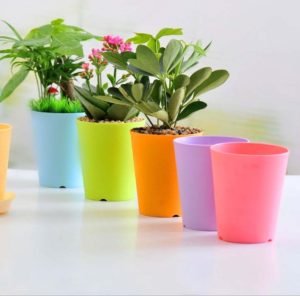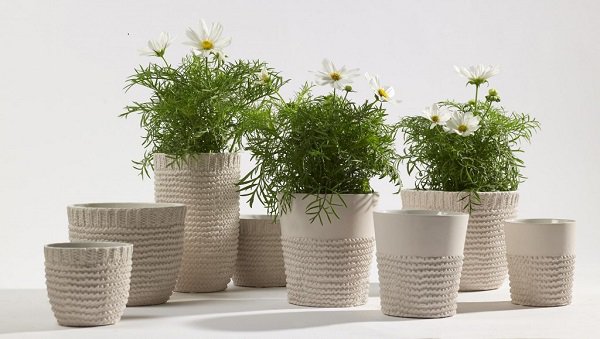both the health of the plant and the condition of the soil will depend on the correct choice of a flower pot Flowers, like children, grow out of their pots, so stock up on new containers for the transplant period. Otherwise, the roots will no longer fit in a cramped vessel, and the green pet will no longer delight you with lush foliage and beautiful flowers.
Many use plastic pots, unaware that ceramic pots are the best option. In general, pots made from natural materials have advantages in many respects: firstly, they provide sufficient ventilation; secondly, thermoregulation is carried out in a natural way (here we mean the optimal thermal balance of the soil). If suddenly poured, which also happens, evaporation will regulate the humidity. And in the summer season, a ceramic pot will protect the roots of the plant from overheating.
Be sure to pay attention to the presence of holes at the bottom of the pot, which allows the earth to breathe and promotes the outflow of excess moisture, which means that harmful microorganisms will not multiply.
pot shape
The ideal shape of the pot can be considered one in which the height is equal to the upper annular diameter, and the bottom diameter is one third less than the upper one. The breathability of a potter's pot is an absolute advantage, but if it is wrapped in foil or painted over, then this property is lost, so use elegant pots or glazed pots as decoration. This means that the main vessel should be placed in a glazed one, which cannot be used as the main one, since the glaze prevents the penetration of air.
The breathability of a potter's pot is an absolute advantage, but if it is wrapped in foil or painted over, then this property is lost, so use elegant pots or glazed pots as decoration. This means that the main vessel should be placed in a glazed one, which cannot be used as the main one, since the glaze prevents the penetration of air.
If the pot was previously occupied by another flower, then before using it again, you need to wash it with hot water and soap.
When plastic pots are taken for flowers, you should always keep in mind that the watering regime will be different, because, unlike a clay pot, moisture is retained in plastic longer. In general, a plastic pot is more often used as an auxiliary element: to bring a flower from the store to the house.
For growing young plants (and even more expensive ones), it is better to take simple pots, because when transplanting it is easier to split such a pot so as not to damage the root system.
Any pot must have a tray where excess water flows, and the bottom should not completely settle into the tray.
 Houseplant Care
Houseplant Care
![]() Transplanting Houseplants
Transplanting Houseplants
![]() Flower Pots: How to Choose
Flower Pots: How to Choose
![]() Houseplant Pests
Houseplant Pests
![]()
![]()
Houseplant Propagation Houseplant
![]() Fertilizers Hydroponics
Fertilizers Hydroponics
![]() Alocasia
Alocasia
![]() Aloe
Aloe
![]() Pineapple
Pineapple
![]() Araucaria
Araucaria
![]() Asparagus
Asparagus
![]() Aphelandra
Aphelandra
![]() Begonia
Begonia
![]() Geranium
Geranium
![]() Dieffenbachia
Dieffenbachia
![]()
![]()
Dracaena
![]() Cacti
Cacti
![]() Kalanchoe
Kalanchoe ![]()
Euphorbia
![]() Monstera
Monstera
![]() Tradescantia Ficus
Tradescantia Ficus
![]() Cyclamens
Cyclamens
PS If you liked the article, please press the buttons of social networks.

Leave a comment